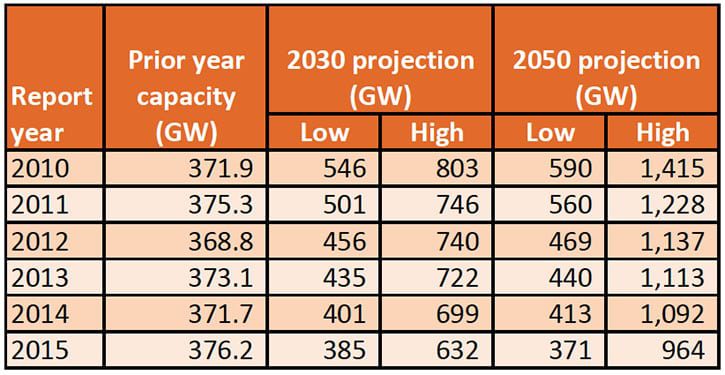Nuclear Power’s Future Is Still Bright, According to IAEA Report
A study released today by the International Atomic Energy Agency (IAEA) suggests that the world’s nuclear power generating capacity will continue growing through at least 2030.
The projected growth varies widely due to uncertainty surrounding energy policy, license renewals, permanent retirements, and future construction, but even the “low case” sees nuclear capacity increasing 2.4% by 2030. If current rates of economic and electricity demand growth (particularly in Asia) are forecast into the future, along with a bigger role for nuclear power in climate change mitigation strategies worldwide, nuclear generation could expand as much as 68% during the next 15 years.
“In order to maintain such a role, each retiring reactor would need to be replaced,” said David Shropshire, head of the IAEA’s Planning and Economic Studies Section. “Our low-case projections show that for every unit of capacity retiring, another unit will be built somewhere in the world by 2030; and in the high case, about 1.7 times the capacity will be constructed.”
However, the growth is less than the agency projected last year and continues the trend of lower estimates (Table 1) since the 2011 Fukushima Daiichi accident. Even so, the IAEA remains optimistic about nuclear power.
 |
| Table 1. Total worldwide nuclear electrical generating capacity estimates. Source: International Atomic Energy Agency |
“Several factors indicate that nuclear energy will play an important role in the world’s energy mix in the long run,” said IAEA Deputy Director General Mikhail Chudakov, head of the Department of Nuclear Energy. “These factors include the volatility of fossil fuel prices, nuclear power’s role in greenhouse gas reduction, energy supply security, population growth and demand for electricity in the developing world.”
China leads the current expansion with 24 reactors under construction. The Far East region is seen growing its capacity over the next 15 years by more than 50% in the low projection. In the “high case,” the region could reach two and a half times its current capacity by 2030.
Western Europe—with Germany and Switzerland each planning to phase out nuclear power—is projected to see capacity decline in both the low and high cases, while North American capacity could go either way.
“It’s important to understand that these projections, while carefully derived, are not predictions,” said Andrii Gritsevskyi, energy system analyst in the IAEA’s Planning and Economic Studies Section. “The estimates should be viewed as very general growth trends, whose validity must be constantly subjected to critical review.”
Just last week a report was released by the International Energy Agency and Nuclear Energy Agency surveying the levelized cost of generating electricity. It found that nuclear power is the lowest cost option when the discount rate is 3% or less. At a 7% discount rate, however, the median value of nuclear is about the same as for coal, and at a 10% discount rate the median value for nuclear is higher than that of either combined cycle gas turbine or coal generating technologies.
—Aaron Larson, associate editor (@AaronL_Power, @POWERmagazine)